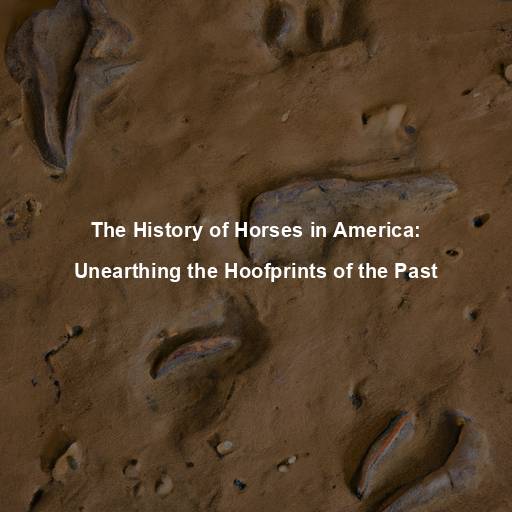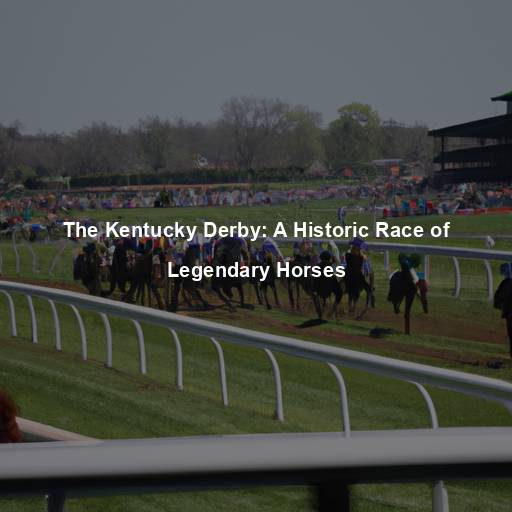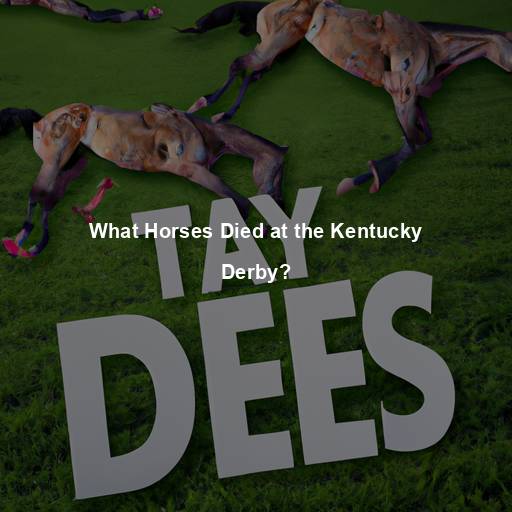The History of Horses in America: Unearthing the Hoofprints of the Past
Last Updated on July 16, 2023 by Evan
Contents
- 1 Unraveling the Mysteries of the Equine Journey to America
- 1.1 The Origins of Equus: Tracing the Ancestry of Horses
- 1.2 The Ice Age Diaspora: Horses Traverse the Bering Land Bridge
- 1.3 The Pleistocene Puzzle: Horses Roam the American Landscape
- 1.4 The Great Extinction: The Disappearance of Horses from America
- 1.5 The Spanish Conquest: Horses Return to the New World
- 1.6 The Wild West: Mustangs and the Spirit of Freedom
- 1.7 Modern-Day Horses: From Racetracks to Ranches
- 1.8 Preserving the Legacy: Conservation Efforts and Equine Welfare
- 1.9 Colonial Influence: The Foundation of American Horse Breeds
- 1.10 The Wild Spirit: America’s Iconic Mustangs
- 1.11 Specialized Breeds: Horses for Every Purpose
- 1.12 Beyond the Saddle: Horses as Therapy Partners
- 1.13 The Sport of Kings: Racing and Equestrian Competitions
- 1.14 Equine-Assisted Activities: The Power of Connection
- 1.15 The Future of Horses in America: Nurturing the Bond
- 1.16 Equine Artistry: The Beauty of the Horse in Art and Literature
- 1.17 Horses as Therapeutic Partners: Healing Hooves and Unconditional Support
- 1.18 Equine Education and Research: Advancing Equine Science and Welfare
- 1.19 Advocacy and Conservation: Protecting Wild Horses and Their Habitat
- 1.20 Equine-Assisted Activities: Empowering Individuals and Building Connections
- 1.21 The Bond Between Humans and Horses: A Timeless Connection
- 2 FAQs – Were Horses in America?
- 2.1 Were horses originally native to America?
- 2.2 When were horses reintroduced to America?
- 2.3 What impact did horses have on Native American tribes?
- 2.4 How did horses change the lifestyle of the Plains Indians?
- 2.5 Did horses become feral and wild in America?
- 2.6 Are wild horses protected in America?
- 2.7 Are there still wild horses in America today?
Unraveling the Mysteries of the Equine Journey to America
The Origins of Equus: Tracing the Ancestry of Horses
Horses, these majestic and powerful creatures that have become beloved companions to humans, have a rich history that stretches back thousands of years. To truly understand the presence of horses in America, we must first delve into their ancient origins. The story begins with a distant ancestor known as the Equus, a genus that encompasses horses, donkeys, and zebras. These remarkable animals evolved on the grasslands of North America around 4 million years ago, their primitive forms slowly adapting to survive and thrive in different environments.
The Ice Age Diaspora: Horses Traverse the Bering Land Bridge
In the awe-inspiring era of the Ice Age, when the world was caught in a frozen embrace, something remarkable unfolded beneath our very feet. A magnificent interplay between ice and water resulted in a breathtaking phenomenon – a lowered sea level that birthed an enigmatic land bridge known as Beringia. This mystical pathway beckoned creatures from all corners of the Earth, including the majestic horses. Against all odds, these intrepid equines set forth on a daring expedition, traversing uncharted territories and leaving us awe-struck as they galloped into the heart of the American continent, weaving a tapestry of wonder and enigma.
The Pleistocene Puzzle: Horses Roam the American Landscape
The majestic entrance of horses into America had a profound impact on the continent’s landscape. Fascinating remnants from the Pleistocene Epoch, a period that stretched over millions of years, tell us stories of these remarkable creatures. Equus scotti and Equus conversidens, two horse species that once roamed freely, displayed extraordinary survival skills in a range of environments – from wide open grasslands to dense, impenetrable forests. Their remarkable ability to adapt had far-reaching consequences, leaving an indelible mark on the ecosystems they called home.
The Great Extinction: The Disappearance of Horses from America
However, the remarkable era of horses in America came to a tragic halt. Approximately 10,000 years ago, a wave of extinctions swept across the continent, wiping out numerous iconic species, including the majestic horses that had once roamed freely. The exact reasons behind this mass extinction event remain a subject of intense scientific debate. Climate change, overhunting by early humans, and shifts in ecosystems are all potential factors that contributed to the disappearance of horses from the American landscape.
The Spanish Conquest: Horses Return to the New World
Throughout the ages, the vast expanse of the American continent bore witness to a peculiar absence – the notable lack of horses. This void, once acutely felt by indigenous communities who depended on these majestic creatures for various facets of their lives, remained an enigma for centuries. Yet, the unfolding of events would take a truly unforeseen trajectory when Spanish conquistadors braved new frontiers in the 15th and 16th centuries, bringing forth an astonishing and irreplaceable treasure – horses. This momentous reintroduction onto the New World’s stage would undoubtedly cast an enigmatic spell, forever reshaping the tapestry of history and forging an indelible bond between man and equine.
The Wild West: Mustangs and the Spirit of Freedom
As horses once again galloped across the vast American landscape, some escaped domestication and established thriving wild populations. These untamed equines, known as mustangs, embodied the spirit of freedom and untamed wilderness. They roamed the western plains and mountains, forming herds that captured the imagination of pioneers, cowboys, and adventurers. The mustang became an enduring symbol of the American West, revered for its strength, endurance, and indomitable spirit.
Modern-Day Horses: From Racetracks to Ranches
In the tapestry of American culture, the enigmatic allure of horses persists with unyielding strength. In the hallowed grounds of renowned racetracks, the rhythmic symphony of thundering hooves electrifies the very air, captivating the souls of onlookers. Yet, it is in the tranquil domains of ranches and farms where horses paint strokes of serenity, their graceful presence gently swaying to the rhythm of nature’s heartbeat. Beyond purely aesthetic fascination, the unique connection shared between humans and horses finds expression in the realm of equestrian sports, where competition becomes a dance of elation and determination.
Preserving the Legacy: Conservation Efforts and Equine Welfare
As we celebrate the role of horses in America, it is essential to acknowledge the importance of preserving their legacy for future generations. Conservation efforts strive to protect wild horse populations and ensure their welfare. Organizations dedicated to equine rescue and rehabilitation work tirelessly to provide a second chance for neglected or abused horses. By promoting responsible ownership, education, and advocacy, we can secure a bright future for these magnificent creatures who have left an indelible mark on the tapestry of American history.
In conclusion, the history of horses in America is a story of resilience, adaptation, and profound connections between humans and animals. From their ancient origins on the grasslands of North America to their triumphant return with the Spanish conquistadors, horses have left hoofprints on the hearts and landscapes of this vast continent. As we navigate the modern world, let us continue to cherish and protect these remarkable creatures, ensuring that their presence endures for generations to come. ## The Evolution of Horse Breeds: A Tapestry of Diversity
Colonial Influence: The Foundation of American Horse Breeds
With the arrival of European settlers in America, a new chapter in the story of horses unfolded. The colonists brought with them various horse breeds, each possessing unique characteristics suited to specific purposes. Breeds such as the sturdy and versatile Morgan, the elegant Thoroughbred, and the hardy American Quarter Horse played pivotal roles in shaping the equine landscape of America. These breeds not only served as working partners but also became cherished companions, forming deep bonds with their human counterparts.
The Wild Spirit: America’s Iconic Mustangs
In a land where settlers sought companionship from domesticated breeds, there emerged a breed that defied the norms and embodied the epitome of untamed liberty and tenacity – the Mustang. Descended from horses that once roamed under the Spanish sky, they broke free from captivity, becoming the embodiment of the indomitable spirit of the American West. These majestic creatures have captivated hearts worldwide, as their wild and free-roaming existence serves as a constant reminder of their unwavering zest for life amidst the challenges they face, such as diminishing habitats and population control measures. Despite the uncertainties that loom, the Mustangs continue to gallivant through the vast landscapes of the western United States, enigmatically drawing us into their world of unyielding resilience.
Specialized Breeds: Horses for Every Purpose
Throughout the evolution of America, the ever-expanding and diverse landscape called for an assortment of horse breeds catered to specific purposes. Witness the mesmerizing Arabian breed, an embodiment of both grace and resilience, ideal for endurance and admired for its alluring appearance. Similarly, the robust Draft horses emerged, celebrated for their unwavering strength and dependability in demanding labor. Delving deeper, we encounter the agile and astute Quarter Horses, dominating in Western disciplines with their unmatched intelligence.
Beyond the Saddle: Horses as Therapy Partners
In a world full of complexities and uncertainties, one creature stands out for its astonishing ability to bring solace and transformation: the horse. Through the remarkable practice of equine-assisted therapy, these majestic beings have emerged as invaluable partners in healing, unlocking emotional, physical, and cognitive growth. The inexplicable bond formed between humans and horses during these therapeutic sessions leaves us in awe, as it weaves together comfort, confidence, and a much-needed sense of connection. From aiding individuals with physical disabilities to supporting veterans battling the demons of post-traumatic stress disorder, and even helping children navigate the challenges of developmental delays, these equine allies have the power to touch lives in ways that defy explanation.
The Sport of Kings: Racing and Equestrian Competitions
For generations, the thundering hooves and graceful strides of thoroughbred horses have stirred the hearts of countless Americans, enveloping them in the enthralling world of horse racing. From the legendary Kentucky Derby to the adrenaline-fueled Preakness Stakes and the illustrious Belmont Stakes, these events bedazzle spectators and test the mettle of both horse and rider. Bred for their unparalleled speed and lithe movements, these majestic creatures gallop across the tracks, fueled by an insatiable thirst for victory and an unwavering determination to leave an indelible mark on the annals of equestrian history.
Beyond racing, equestrian competitions encompass a wide range of disciplines, each showcasing the unique abilities of different horse breeds and riders. From the grace and precision of Dressage to the daring leaps of Show Jumping, from the excitement of Barrel Racing to the artistry of Reining, these competitions celebrate the harmonious partnership between horse and rider, highlighting the bond forged through years of training and dedication.
Equine-Assisted Activities: The Power of Connection
Horses have a remarkable ability to connect with humans on a deep level, transcending language barriers and fostering personal growth. Equine-assisted activities, such as therapeutic riding and horsemanship programs, provide individuals with physical, cognitive, or emotional challenges an opportunity to engage with these magnificent animals. Through grooming, riding, and interacting with horses, participants develop confidence, social skills, and a sense of empowerment. The non-judgmental nature of horses creates a safe and supportive environment, allowing individuals to overcome obstacles and discover their full potential.
The Future of Horses in America: Nurturing the Bond
In an ever-evolving landscape, our gaze is drawn towards the horizon, where the harmonious coexistence between humanity and these majestic beings lies. The intricate tapestry of ensuring the welfare of our equine companions, preserving the age-old connection we share, requires a delicate balance. Captivated by the equestrian realm, we must weave responsible breeding techniques, adept training methods, and unwavering devotion into the very fabric of their existence, nurturing their vitality for years to come. Moreover, our steadfast commitment to safeguarding their natural habitats and embracing sustainable land stewardship will ingeniously fortify the sanctuaries that nurture and sustain these incredible creatures.
Education and outreach play vital roles in fostering a deep understanding and appreciation for horses. By sharing their stories, their history, and their impact on our lives, we can inspire future generations to cherish and protect these magnificent animals. Through continued research and advancements in equine science, we can enhance their welfare, ensuring that horses in America continue to enrich our lives and remain an integral part of our cultural heritage.
In conclusion, the story of horses in America is one of evolution, resilience, and profound connections. From their ancient origins on the continent to their reintroduction by European settlers, horses have left an indelible mark on the fabric of American society. Whether as working partners, beloved companions, or therapy providers, their presence brings joy, inspiration, and a sense of wonder. As we navigate the future, let us embrace our role as stewards of these magnificent creatures, nurturing the bond between humans and horses for generations to come.
Equine Artistry: The Beauty of the Horse in Art and Literature
For centuries, horses have evoked a certain fascination, creating an indescribable pull on the souls of creatives. Artists and writers, compelled by their majesty, have poured their hearts into transforming their awe into works of art and literature. In galleries and museums worldwide, you can witness this extraordinary obsession with horses, as paintings, sculptures, and photographs come alive, attempting to encapsulate the elusive blend of grace, power, and indomitable spirit that defines these majestic beings. From Frederic Remington’s awe-inspiring horse sculptures to the ethereal equine portraits by George Stubbs, the art world becomes a portal into the enigmatic and enduring allure of these remarkable creatures.
Throughout the rich tapestry of literature, horses have played a mesmerizing role, commanding our attention with their graceful presence. Be it the heart-wrenching saga of Black Beauty by the astute Anna Sewell, unraveling the devastating reality suffered by these majestic creatures, or the spellbinding chronicle spun by Laura Hillenbrand in Seabiscuit, a gripping homage to the extraordinary odyssey of a racehorse, these narratives whisk readers into an enchanting realm where equine companionship evokes a profound emotional bond, nurturing compassion and enlightenment.
Horses as Therapeutic Partners: Healing Hooves and Unconditional Support
Equine-assisted therapy has gained recognition for its ability to provide therapeutic benefits to individuals facing physical, emotional, or cognitive challenges. The gentle and non-judgmental nature of horses creates a safe and supportive environment for participants to engage in activities that promote physical strength, emotional well-being, and cognitive development. From therapeutic riding programs that aid individuals with disabilities to equine-facilitated mental health sessions that address trauma and stress, horses have become invaluable partners in the healing process.
Equine Education and Research: Advancing Equine Science and Welfare
The world of equine science is a captivating realm, brimming with enigmatic discoveries and perplexing breakthroughs. A symphony of dedicated researchers delves into the depths of equine biology, behavior, and health, their relentless pursuit of knowledge empowering us to comprehend these majestic creatures on a profound level. Through the intricate study of equine nutrition, genetics, and even biomechanics, these intrepid explorers unearth a trove of wisdom that paves the way for evidence-based practices, elevating the well-being of horses across diverse domains, from the exhilarating racecourses to the comforting confines of cozy backyard stables. In this intricate tapestry of knowledge, the story of equine science unfurls, captivating and enlightening us with every surprising twist and turn.
In the vast realm of equine enthusiasts, there exists a thriving world of educational programs that serve as beacons of knowledge and advocates for responsible horse ownership. These initiatives, ranging from enlightening horsemanship clinics to immersive workshops on equine health and nutrition, aim to equip horse lovers with the necessary skills and understanding to provide optimal care for their beloved equine companions. With a burst of fervor and a hint of perplexity, these programs strive tirelessly to disseminate invaluable wisdom and foster a community of well-informed horse stewards.
Advocacy and Conservation: Protecting Wild Horses and Their Habitat
Wild horses, particularly the iconic Mustangs of the American West, have become symbols of freedom and the untamed spirit of the wilderness. However, these majestic creatures face numerous conservation challenges, including habitat loss, competition for resources, and population control measures. Advocacy groups and organizations work tirelessly to protect wild horse populations, ensuring their continued presence in the landscapes they have roamed for centuries.
Efforts are also underway to promote sustainable land management practices that benefit both horses and the ecosystems they inhabit. By preserving natural habitats, restoring degraded areas, and implementing responsible management strategies, we can help secure a future for wild horses and safeguard the biodiversity of their native environments.
Equine-Assisted Activities: Empowering Individuals and Building Connections
In the realm of horse-related endeavors, equine-assisted activities reign supreme. These extraordinary programs harness the mystical powers of these majestic creatures to facilitate personal development, empowerment, and connection. Brace yourself, dear reader, for this transcends mere therapeutic riding, delving deep into the realms of equine-assisted learning, equine-facilitated mental health, and the enchanting domain of equine-assisted team building. Immerse yourself in the world of equines, and witness the transformative journey as individuals acquire indispensable life skills, unearth their hidden self-confidence, and forge profound connections that defy explanation.
Equine-assisted activities also extend to populations such as veterans, at-risk youth, and individuals facing mental health challenges. Through tailored programs and interventions, horses become partners in healing, providing support, comfort, and a source of inspiration for those who may be struggling.
The Bond Between Humans and Horses: A Timeless Connection
The enduring bond between humans and horses is a testament to the profound impact these animals have on our lives. Whether as companions, working partners, or sources of inspiration, horses continue to bring joy, companionship, and a sense of purpose to countless individuals. They teach us important life lessons about trust, patience, and resilience. Through their presence, horses offer us solace in difficult times, remind us of our capacity for empathy and love, and awaken a sense of wonder and awe.
As we navigate an ever-changing world, it is crucial to recognize and honor the contributions of horses to our lives and society. By promoting responsible horse ownership, supporting equine welfare initiatives, and fostering a deep understanding and appreciation for these magnificent creatures, we can ensure that the enduring legacy of horses in American culture continues to thrive for generations to come.
In conclusion, horses hold a cherished place in American culture, from their depiction in art and literature to their roles as therapeutic partners and educators. Through advocacy and conservation efforts, we can protect wild horse populations and their habitats, while equine-assisted activities empower individuals and strengthen connections. The bond between humans and horses remains a timeless and transformative connection, reminding us of the profound impact these majestic creatures have on our lives. Let us cherish and protect this enduring legacy, ensuring that horses in America continue to inspire, heal, and enrich our world.
FAQs – Were Horses in America?
Were horses originally native to America?
No, horses were not native to America. The ancestors of modern horses originated in North America but became extinct around 10,000 years ago. Horses, as we know them today, were reintroduced to the American continent by European explorers and settlers in the late 15th and early 16th centuries.
When were horses reintroduced to America?
Horses were reintroduced to America during the 15th and 16th centuries. Christopher Columbus’ second voyage in 1493 brought the first horses back to the Americas. Spanish explorers, such as Hernán Cortés and Francisco Pizarro, also brought horses during their conquests in the early 16th century. These initial introductions laid the foundation for horses to spread across the American continent.
What impact did horses have on Native American tribes?
The encounter between Native American tribes and horses ignited an extraordinary transformation in their existence, casting a spell of perplexity and exhilaration. These majestic creatures wielded an unparalleled influence, redefining the very essence of their way of life. A burst of unprecedented possibilities unfolded as tribes embraced the enigmatic bond between humans and equines. The hunting grounds, once veiled in mystery, became alluring canvases for their nimble hooves, while the nomadic winds whispered tales of speed and exploration as tribes traversed vast distances with unprecedented swiftness. Amidst the chaos of battle, the warriors rode into the heart of uncertainty, amplifying their prowess and igniting an unquenchable spirit within their tribes. In this captivating era of change, horses wove themselves intricately into the fabric of Native American cultures, forever etching their hoofprints upon the tapestry of history.
How did horses change the lifestyle of the Plains Indians?
Horses played a crucial role in transforming the lifestyle of the Plains Indians. Prior to the arrival of horses, these tribes relied heavily on foot travel and were restricted in their movements. With horses, the Plains Indians gained swift and agile means of transportation, allowing them to follow buffalo herds and move across vast distances more easily. This mobility facilitated trade, enabled better defense against rival tribes, and brought significant changes to their social and cultural practices.
Did horses become feral and wild in America?
Throughout the vast expanse of America, something truly remarkable occurred – the horses, once captive, broke free from the chains of domestication and embarked on a bewildering adventure towards creating untamed populations. As the European settlers tirelessly ventured across the continent, a curious phenomenon unfolded – horses managed to escape or were purposely left behind, entwining their destiny with the untamed wilderness. Thriving in diverse landscapes, from the vast Great Plains to the wild terrains of the American Southwest, these equine wanderers established themselves as feral herds. Even today, their majestic presence can be witnessed in select corners of the United States, such as the untamed Pryor Mountains of Montana and Wyoming, or the windswept Outer Banks of North Carolina, sparking wonder and awe among those who chance upon their enigmatic existence.
Are wild horses protected in America?
Ah, the mystique and allure of wild horses in America! These majestic creatures, so full of untamed spirit, are safeguarded under the watchful eyes of federal law. The Wild Free-Roaming Horses and Burros Act of 1971 stands tall as a testament to our commitment to their preservation and protection. Embracing the undeniable duty bestowed upon them, the Bureau of Land Management (BLM) vows to be the steadfast guardian of these captivating herds, ensuring their well-being and harmonious coexistence with their cherished public lands. It is through this delicate dance of balance that the BLM strives to nurture their natural splendor while safeguarding the fragile ecosystems they call home.
Are there still wild horses in America today?
In the vast expanse of America’s untamed landscapes, a poignant presence persists – the wild horses. With an elusive number that dances like fireflies in the dark, these majestic creatures traverse the rugged terrain, embodying the essence of the American West. A cherished glimpse into the nation’s storied past, they gallop freely, their hooves echoing the beating heart of the country’s natural heritage. However, amidst this mesmerizing spectacle, a captivating conundrum emerges – the future these wild horses hold hangs in a delicate balance, as devoted efforts seek to safeguard their survival and ensure their welfare for generations to come.







